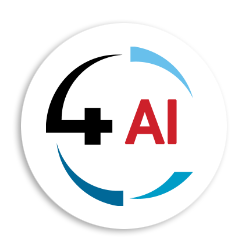Blog
Copilot - Ready or Not?

Introduction
To Copilot or not to Copilot; many organisations are facing the critical decision of whether to adopt Microsoft's generative AI assistant into their workplace or not. Is it too early in the adoption lifecycle, do they wait for the technology to mature or are they already behind competitors who have started the journey and most importantly, does the cost justify the perceived benefits?
The reality is that Copilot (and generative AI by extension), will become increasingly integral to organisations to be more efficient and to drive innovation as time moves on. It is being adopted faster than any technological predecessor and will revolutionise the way organisations operate and innovate. Those that choose to ignore it, do so at their own peril.
Copilot "Readiness"
Enter the readiness assessments to help customers make the decision of whether they are ready or can adopt Copilot. Many consulting firms are offering these assessments - utilising check lists to gauge customer readiness for Copilot based on whether they are using the latest cloud versions of Microsoft Apps, SharePoint for content storage, Microsoft Teams for communications and collaboration, etc.
They might also engage with customers to identify and understand business use cases that help support adopting Copilot into the workplace, with the intent of improving productivity and efficiency.
These approaches have their merits where customers' ICT landscapes are simple; those utilising on premise versions of Microsoft products for example, would be considered 'immature' when positioned on the readiness scale and will need to crawl (move to the Microsoft cloud) before they start running with Copilot. Similarly, organisations that have access to cloud products such as SharePoint and Teams might not be utilising these effectively, which puts them some distance away from being 'ready' for Copilot.
But what about organisations that are already entrenched in Microsoft's Modern Workplace way of working? Where they are utilising SharePoint for files storage, maybe even with basic content classification structures, workflows, etc., using Teams for chat, meetings, collaboration, maybe even subject-matter specific Teams channels for specific groups to collaborate within set boundaries.
Being further down the proverbial readiness path actually makes the decision harder of whether to adopt Copilot. You may be thinking,"We've already invested in Microsoft's M365 stack to make our employees more productive and they can now work from anywhere securely, so why spend more money on Copilot?"
This is where it becomes critical to look into the detail of users' ways of working to determine what the use cases are. Purely relying on what executives and leadership say about their workforce rarely reflects they reality of what is happening on the ground or at the very best, does not highlight the extent of the challenges faced by employees.
Copilot and the Role of Microsoft Graph API
Microsoft Graph is key to what Microsoft Copilot offers. Its ability to generate responses to user prompts within the context of an organisation's information and content is what distinguishes it from ChatGPT, among other generative AI assistants. Copilot utilises the Graph's vast intelligence about employees, emails, files, meetings, and importantly, permissions to provide responses applicable to the user and within the parameters of what is allowed based on existing security settings.
This wealth of data about organisational behaviour and activity, from email exchanges and file sharing to calendar events and chat histories, means that Graph API can paint a comprehensive picture of an organisation’s operations and user activity.
But how can we leverage this data to answer questions about use cases and whether customers should adopt Copilot or not?
A different approach: Identifying Organisational Needs with Graph API
By analysing Graph API data, we can identify patterns that indicate areas for improvement or use cases for Copilot.
Perhaps there’s a high volume of emails about the same topic, suggesting a lack of effective collaboration. Or maybe certain manual tasks are being repeated frequently, indicating a potential area for AI-assisted automation. Poor employee engagement and a lack of innovation can also be identified through patterns in Graph API data.
The answer thus, lies in the detailed Graph data, interpreting the organisation's behavioural patterns it’s hiding, creating use cases for Copilot based on these patterns and empowering those that will truly benefit from generative AI.
Ensuring adoption
Fast forward to having adopted Microsoft Copilot, these patterns hidden in the Graph API data should be used to track its usage and impact on the organisation. By comparing pre- and post-implementation data, the effectiveness of Copilot addressing the identified use cases can be evaluated and provide valuable insights for further refining the use thereof, driving continuous improvement.
Conclusion
4Sight has long been providing our customers with insights and recommendations on how to optimise and modernise their ICT landscapes. We do this using technology that automates the interpretation of data and telemetry generated around infrastructure, users and applications.
The above approach, utilising the Graph API data is how we differentiate ourselves from competitors offering readiness assessments for Copilot.
Since we combine technology with intelligence, for those wishing to go on this journey, we can help organisations make the right decisions.
Copilot with 4Sight. Email us at This email address is being protected from spambots. You need JavaScript enabled to view it.


